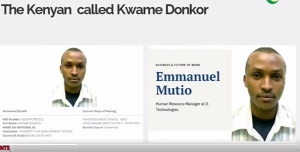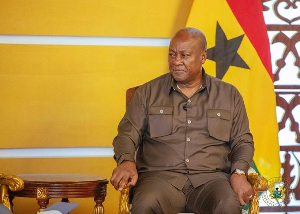Goldman Sachs, the global financial institution, with fraud allegations levied against it has a long history of setting up its clients for a fall...and making handsome profits.
This is a story of how this global investment banking and securities firm screwed Ghana
In 1998, Ashanti Gold was the 3rd largest Gold Mining company in the world. The first "black" company on the London Stock Exchange, Ashanti had just purchased the Geita mine in Tanzania, positioning Ashanti to become even larger. But in May 1999, the Treasury of the United Kingdom decided to sell off 415 tons of its gold reserves. With all that gold flooding the world market, the price of gold began to decline. By August 1999, the price of gold had fallen to $252/ounce, the lowest it had been in 20 years.
Ashanti turned to its Financial Advisors - Goldman Sachs - for advice. Goldman Sachs recommeded that Ashanti purchase enormous hedge contracts - "bets" on the price of gold. Simplifying this somewhat, it was similar to when a homeowner 'locks in' a price for heating oil months in advance. Goldman recommeded that Ashanti enter agreements to sell gold at a 'locked-in' price, and suggested that the price of gold would continue to fall.
But Goldman was more than just Ashanti's advisors. They were also sellers of these Hedge contracts, and stood to make money simply by selling them. And they were also world-wide sellers of Gold itself.
In September 1999 (one month later), 15 European Banks with whom Goldman had professional relationships made a unanimous surprise announcement that all 15 would stop selling gold on world markets for 5 years. The announcement immediately drove up gold prices to $307/ounce, and by October 6, it had risen to $362/ounce.
Ashanti was in trouble. At Goldman's advice, they had bet that gold prices would continue to drop, and had entered into contracts to sell gold at lower prices. These contracts were held by a group of 17 other world banks. Ashanti found themselves being forced to buy gold at high world prices and sell it at the low contract prices to make good on the contracts. The result? In a few weeks time, Ashanti found itself with 570 million dollars worth of losses. It had to beg the 17 banks not to force the execution of the contracts.
Who served as the negotiator for the 17 banks and Ashanti? Goldman Sachs. The same company that designed the contracts for Ashanti(making a profit in their sale.
The basic bankruptcy of Ashanti drove its stock price from an all time high of $25 per share to a paltry $4.62 per share. Thousands of investors - your blogger among them - lost their investments almost overnight as Ashanti was declared insolvent.
In the end (2003), Ashanti was purchased by their largest African competitor, AngloGold, a British company headquartered in South Africa, who bought them for a song. The Financial Advisors to AngloGold? You guessed it: Goldman Sachs.
The destruction of Ashanti Gold by Goldman Sachs was saturated with fraud and conflicts of interest: Goldman Sachs served as Ashanti's Financial Advisors; profitted form the contracts they designed and marketed for Ashanti; was involved in the manipulation of the gold prices on which the contracts depended; represented Ashanti's creditors when the contracts went bad; and profitted as the Financial Advisors to the company that picked up the Ashanti corpse for pennies on the dollar.

















